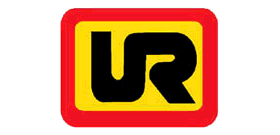 Uganda Railways revamp to spur trade
Uganda Railways revamp to spur trade
Uganda Railways Corporation (URC) has embarked on an ambitious revamping exercise in an effort to fast-track development and spurring regional trade.
These are also planned to open up the mineral-rich regions, agriculture production, and markets to the Democratic Republic of Congo and South Sudan. The total cost is estimated to be Sh3.6 trillion ($1bn).
Among the new services is the re-launch of cargo services between Dar es Salaam Port and Kampala following a more than decade period of dormancy.
In order to further improve trade and reduce the costs of doing business, the corporation recently purchased four locomotives at a cost of Sh42bn, delivered in September last year.
According to the corporations Managing Director Stanley Sendegeya, the locomotives have so far reduced transit time from 24 hours to 11 hours, traveled 7054 kilometers and delivered 17,318 tons of cargo from Malaba to Kampala.
“We want more traders, international organizations to utilize our services and it is for this reason that we have reduced the tariffs by 50%
In addition, the corporation recently launched the MV Pamba ferry that plies between Mwanza and Portbell in Luzira.
He said the ferry has already increased its capacity to 10,000 metric tons of cargo per month. It has also reduced the delivery to 50 percent transit time which is 18 hours from Dar es Salaam to Mwanza and to Portbell in Luzira compared to the roads where it takes three days.
He further explained that a trader using the ferry pays $20 per ton compared to the $35 when using road and for exports its $12 per ton, these are aimed at promoting Uganda exports.
In addition, the ferry would support a lot of export promotion through the port of Dar es Salaam. Uganda has also got MV Kaawa which adds on another 10,000 metric tons.
In comparison, Kenya has got MV Uhuru and Tanzania has got MV Umoja, these are the wagon ferries that ply Lake Victoria.
He explained that the corporation is also in the process of revamping upcountry lines to facilitate trade estimated to cost Sh3.6 trillion.
These are also aimed at opening the mineral-rich regions, agriculture production, and markets to the Democratic Republic of Congo and South Sudan. The total cost is estimated to be Sh3.6 trillion ($1bn).
He said that work between Tororo and Gulu (costing 75m Euros) has started and it will be completed by the end of 2023.
“We are still negotiating with the government for the Gulu-Pakwach ($100m) and Kampala-Kasese ($400m) lines to cover northern and northwestern regions and work is expected to start in the next five years,”.
“Overall we are building stability of the service. We have decided to carry out emergency restoration of the railway lines and rolling stock,”.
The corporation is also implementing a 28m Euro fund project from Spain to develop a passenger train service to operate between Kampala and Mukono.
This will be ready in the next two years with new coaches, new lines, and stations. The Spanish are already constructing a factory for concrete sleepers at Kawolo in Mukono.
The African Development Bank (AfDB) is also providing funds for Kampala-Portbell and Kampala-Kyengera lines.
In the next ten years, Uganda will have the Kampala Light Railway network comprised of the Kampala Metro Railway network. It will be managed by Kampala City Council Authority (KCCA), URC, and other urban authorities.
Mr. Sendegeya added that Uganda Railways Corporation has agreed with the over 20,000 encroachers to vacate the railway land by March 31st, 2022.
“We have already started valuing their properties and by the 31st March, we should have known who owns what and how much and the government will compensate them starting next financial year with a total of Shs50bn,”
“We also agreed with them that no new person should encroach on the land starting October 1, 2021, the exercise of vacating the land will be supervised by a government team comprised of security, local administration, the corporation and the Ministry of Works and Transport.
He told this reporter that the major challenge is funding to achieve the equilibrium to reach self-sustainability.
“We have to be supported; we also have a challenge of the old railway lines, wagons, locomotives, and the internal capacity to provide excellent services since 15 years have passed without any serious operations.
We have to automate technology, skills and management capacity and adopt best practices in the railways”.
